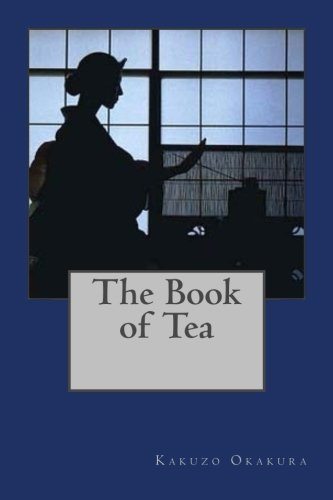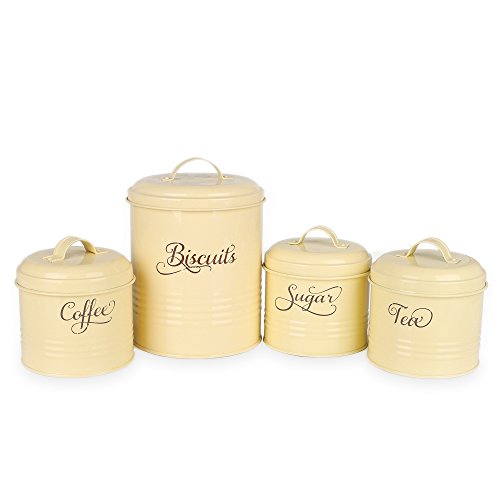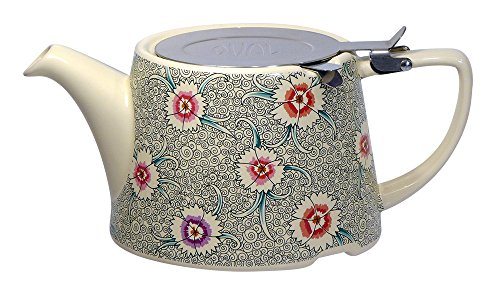The Book of Tea
The Book of Tea is a long essay linking the role of tea (teaism) to the aesthetic and cultural aspects of Japanese life. Addressed to a western audience, it was originally written in English and is one of the great English tea classics. Okakura had been taught at a young age to speak English and
The Book of Tea is a long essay linking the role of tea (teaism) to the aesthetic and cultural aspects of Japanese life. Addressed to a western audience, it was originally written in English and is one of the great English tea classics. Okakura had been taught at a young age to speak English and was proficient at communicating his thoughts to the Western mind. In his book, he discusses such topics as Zen and Taoism, but also the secular aspects of tea and Japanese life. The book emphasizes how Teaism taught the Japanese many things; most importantly, simplicity. Kakuzo argues that this tea-induced simplicity affected art and architecture, and he was a long-time student of the visual arts. He ends the book with a chapter on Tea Masters, and spends some time talking about Sen no Rikyu and his contribution to the Japanese tea ceremony. According to Tomonobu Imamichi, Heidegger’s concept of Dasein in Sein und Zeit was inspired – although Heidegger remained silent on this – by Okakura Kakuzo’s concept of das-in-der-Welt-sein (being-in-the-worldness) expressed in The Book of Tea to describe Zhuangzi’s philosophy, which Imamichi’s teacher had offered to Heidegger in 1919, after having followed lessons with him the year before.That a nation should construct one of its most resonant national ceremonies round a cup of tea will surely strike a chord of sympathy with at least some readers of this review. To many foreigners, nothing is so quintessentially Japanese as the tea ceremony–more properly, “the way of tea”–with its austerity, its extravagantly minimalist stylization, and its concentration of extreme subtleties of meaning into the simplest of actions. The Book of Tea is something of a curiosity: written in English by a Japanese scholar (and issued here in bilingual form), it was first published in 1906, in the wake of the naval victory over Russia with which Japan asserted its rapidly acquired status as a world-class military power. It was a peak moment of Westernization within Japan. Clearly, behind the publication was an agenda, or at least a mission to explain. Around its account of the ceremony, The Book of Tea folds an explication of the philosophy, first Taoist, later Zen Buddhist, that informs its oblique celebration of simplicity and directness–what Okakura calls, in a telling phrase, “moral geometry.” And the ceremony itself? Its greatest practitioners have always been philosophers, but also artists, connoisseurs, collectors, gardeners, calligraphers, gourmets, flower arrangers. The greatest of them, Sen Rikyu, left a teasingly, maddeningly simple set of rules: Make a delicious bowl of tea; lay the charcoal so that it heats the water; arrange the flowers as they are in the field; in summer suggest coolness; in winter, warmth; do everything ahead of time; prepare for rain; and give those with whom you find yourself every consideration. A disciple remarked that this seemed elementary. Rikyu replied, “Then if you can host a tea gathering without deviating from any of the rules I have just stated, I will become your disciple.” A Zen reply. Fascinating. –Robin Davidson, Amazon.co.uk













Philosophy of Tea This books is a quick and informative introduction to the philosophy underpinnig “Teaism”. The book outlines how tea masters tried to live their lives according to the simple grace of the Japanese tea ceremony.For those looking for detailed instructions on conducting a tea ceremony, look elsewhere. But for those who want a handbook on a way of life, read further
Remains the classic introduction to Chado Okakura’s book is a timeless dissertation on both the nature of tea and of Japanese culture that adapted it from earlier origins in China, transforming the simple act of making and serving a humble beverage into a quintessential microcosm of the Japanese traditional art of living. Though written for the edification of Westerners in another age, the author’s wonderfully crafted prose still convincingly conveys the significance of green tea in a manner that doesn’t require you to become a Zen…
Philosophy, Life, Art, Flowers, Architecture, This Moment… and Tea. Appreciation. Published in 1906, Okakura’s ‘Book of Tea’ espouses that tea is the foundation for a system of life, a philosophy, and it’s associated benefits all conspire to bring together that which is fundamental, holistically and spiritually. From Taoist and Zen upbringings, Teaism (not a typo!) comes with an admixture of the two as a world-philosophy, disposition and mindset. Being in the here and now and as Okakura writes: ‘The whole ideal of Teaism is a result of this Zen…